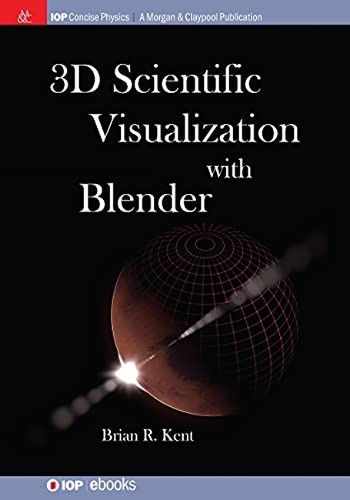Readings Newsletter
Become a Readings Member to make your shopping experience even easier.
Sign in or sign up for free!
You’re not far away from qualifying for FREE standard shipping within Australia
You’ve qualified for FREE standard shipping within Australia
The cart is loading…






This title is printed to order. This book may have been self-published. If so, we cannot guarantee the quality of the content. In the main most books will have gone through the editing process however some may not. We therefore suggest that you be aware of this before ordering this book. If in doubt check either the author or publisher’s details as we are unable to accept any returns unless they are faulty. Please contact us if you have any questions.
This is the first book written on using Blender (an open-source visualization suite widely used in the entertainment and gaming industries) for scientific visualization. It is a practical and interesting introduction to Blender for understanding key parts of 3D rendering that pertain to the sciences via step-by-step guided tutorials. Any time you see an awesome science animation in the news, you will now know how to develop exciting visualizations and animations with your own data.
3D Scientific Visualization with Blender takes you through an understanding of 3D graphics and modeling for different visualization scenarios in the physical sciences. This includes guides and tutorials for:
Understanding and manipulating the interface Generating 3D models Understanding lighting, animation, and camera control Scripting Data import with the Python API
The agility of Blender and its well organized Python API make it an exciting and unique visualization suite every modern scientific/engineering workbench should include. Blender provides multiple scientific visualizations including: solid models/surfaces/rigid body simulations; data cubes/transparent/translucent rendering; 3D catalogs; N-body simulations; soft body simulations; surface/terrain maps; and phenomenological models. The possibilities for generating visualizations are considerable via this ever growing software package replete with a vast community of users providing support and ideas.
$9.00 standard shipping within Australia
FREE standard shipping within Australia for orders over $100.00
Express & International shipping calculated at checkout
Stock availability can be subject to change without notice. We recommend calling the shop or contacting our online team to check availability of low stock items. Please see our Shopping Online page for more details.
This title is printed to order. This book may have been self-published. If so, we cannot guarantee the quality of the content. In the main most books will have gone through the editing process however some may not. We therefore suggest that you be aware of this before ordering this book. If in doubt check either the author or publisher’s details as we are unable to accept any returns unless they are faulty. Please contact us if you have any questions.
This is the first book written on using Blender (an open-source visualization suite widely used in the entertainment and gaming industries) for scientific visualization. It is a practical and interesting introduction to Blender for understanding key parts of 3D rendering that pertain to the sciences via step-by-step guided tutorials. Any time you see an awesome science animation in the news, you will now know how to develop exciting visualizations and animations with your own data.
3D Scientific Visualization with Blender takes you through an understanding of 3D graphics and modeling for different visualization scenarios in the physical sciences. This includes guides and tutorials for:
Understanding and manipulating the interface Generating 3D models Understanding lighting, animation, and camera control Scripting Data import with the Python API
The agility of Blender and its well organized Python API make it an exciting and unique visualization suite every modern scientific/engineering workbench should include. Blender provides multiple scientific visualizations including: solid models/surfaces/rigid body simulations; data cubes/transparent/translucent rendering; 3D catalogs; N-body simulations; soft body simulations; surface/terrain maps; and phenomenological models. The possibilities for generating visualizations are considerable via this ever growing software package replete with a vast community of users providing support and ideas.